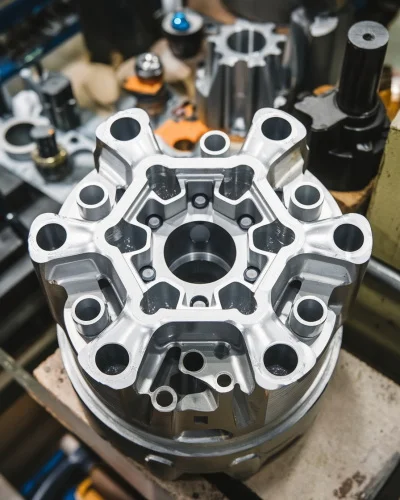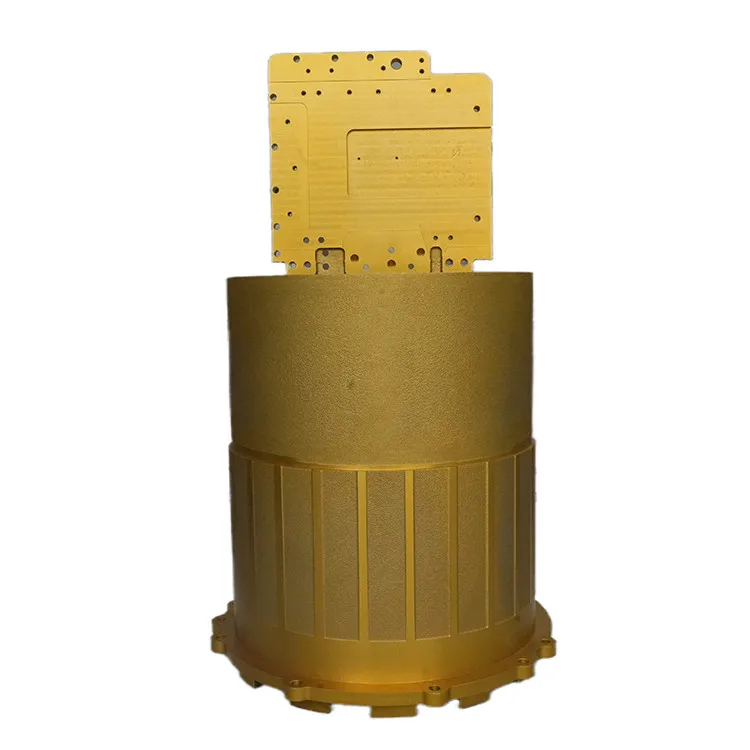The role of Precision aluminum casting in achieving excellence
Recognizing the Environmental Advantages of Light Weight Aluminum Factory Techniques
Light weight aluminum foundry techniques play an essential role in advancing sustainability within the production industry. By applying advanced recycling approaches and energy-efficient practices, these techniques greatly decrease waste and carbon impacts. Innovative casting techniques additionally enhance resource preservation efforts. As markets increasingly prioritize ecological responsibility, understanding the complete impact of these methods ends up being important. What particular innovations are blazing a trail in this change?
The Duty of Light Weight Aluminum in Sustainable Production
Numerous materials add to lasting production, light weight aluminum stands out due to its distinct residential or commercial properties and recyclability. This light-weight metal is not only durable yet likewise has excellent rust resistance, making it an excellent option for numerous applications, from auto to building and construction. Its high strength-to-weight proportion results in energy savings during transport and use. Aluminum can be recycled indefinitely without shedding its integral top qualities, promoting a circular economic climate.
The production procedure of aluminum has actually advanced, integrating energy-efficient methods that minimize carbon footprints. By making use of renewable energy resources, manufacturers are progressively decreasing the ecological effect related to light weight aluminum production. Additionally, using recycled light weight aluminum requires significantly much less energy contrasted to drawing out and improving main aluminum, leading to reduced greenhouse gas discharges. As markets look for lasting solutions, light weight aluminum's adaptability and green features position it as a crucial product in the search of greener production methods.
Advanced Recycling Techniques in Aluminum Foundries
Advanced reusing techniques in aluminum factories are reinventing the method scrap aluminum is refined and recycled. Cutting-edge approaches, such as closed-loop recycling systems, enable factories to redeem aluminum from manufacturing waste and out-of-date products efficiently. These systems lessen material loss and enhance the quality of recycled light weight aluminum, making it a sensible option to main aluminum production.
In addition, progressed arranging innovations, including automated optical sorting and X-ray fluorescence, boost the splitting up of light weight aluminum from various other materials, ensuring greater pureness degrees in recycled outcomes. This accuracy reduces contamination, which can endanger the integrity of the final product.
The assimilation of innovative melting modern technologies, such as induction melting and energy-efficient heating systems, streamlines the reusing process, lowering energy intake. Collectively, these innovations add to a much more lasting light weight aluminum sector by lowering reliance on virgin products and decreasing greenhouse gas exhausts connected with aluminum production.
Power Performance Improvements in Foundry Procedures
Energy performance improvements in aluminum foundry operations can significantly boost sustainability methods. Carrying out waste warm recuperation systems allows factories to repurpose excess energy, minimizing total energy usage. Furthermore, advancements in procedure automation enhance operations, bring about lowered waste and optimized resource use.
Waste Heat Recovery
Executing waste warmth healing systems in light weight aluminum foundries substantially enhances energy efficiency by capturing and reusing excess thermal energy produced throughout production processes. These systems promote the conversion of thrown away heat into usable power, which can be utilized for numerous applications within the foundry, such as powering or preheating materials equipment. By recovering heat that would certainly or else be removed into the environment, factories can markedly decrease their general power usage and greenhouse gas emissions. This method not only reduces functional costs yet additionally promotes lasting methods within the sector. In addition, the adoption of waste warmth healing modern technologies lines up with governing requirements targeted at reducing ecological effect, making it a vital component of modern-day light weight aluminum factory operations.
Process Automation Advantages
Automating procedures in aluminum factories can significantly improve power performance by enhancing production workflows and reducing waste. By implementing advanced modern technologies such as robotics and device discovering, factories can simplify operations, lessening unneeded energy usage. Automated systems promote precise control over temperature and material handling, making certain that power is made use of only when needed. Furthermore, real-time surveillance allows for instant adjustments, reducing the risk of energy loss. The assimilation of automation not only improves productivity however likewise decreases functional expenses, making factories a lot more affordable. As a result, these energy-efficient methods add significantly to sustainability goals, decreasing the environmental footprint of light weight aluminum production while satisfying increasing market needs - Precision aluminum casting. Boosted energy performance through automation stands for a vital action in the direction of greener factory procedures
Lowering Waste With Cutting-edge Casting Methods
Innovative spreading techniques play a necessary role in minimizing waste in light weight aluminum factories. Methods such as innovative molding and the usage of recyclable materials substantially lessen manufacturing scrap. These techniques not just enhance efficiency however also add to a much more lasting production procedure.
Advanced Molding Techniques
As markets increasingly prioritize sustainability, advanced molding techniques in light weight aluminum shops become reliable options for reducing waste. These innovative methods, such as 3D printing and precision mold production, significantly boost the efficiency of the casting process. By making use of computer-aided design (CAD) and simulation innovations, producers can optimize mold geometry, minimizing material use while keeping product stability. Additionally, progressed strategies enable the manufacturing of intricate forms that conventional methods can not attain, minimizing the demand for extra machining and thereby lowering scrap product. The versatility of these strategies enables quick prototyping, further reducing lead times and power usage. Generally, the implementation of advanced molding methods represents a vital action toward eco liable light weight aluminum production, aligning with international sustainability objectives.
Recyclable Material Application
Recyclable materials play a critical role in decreasing waste within aluminum foundries, changing the casting landscape with their effective use. By integrating scrap light weight aluminum and other recyclable elements into the manufacturing procedure, factories can substantially lower the demand for virgin products. This not just conserves natural deposits but additionally minimizes power consumption related to mining and refining. Cutting-edge casting techniques, such as die spreading and sand casting, enable for seamless assimilation of these materials, ensuring top quality outcomes. The use of recyclable products promotes a round economic climate, where sources are consistently recycled and repurposed, reducing land fill payments. Eventually, the tactical use recyclables enhances sustainability while advertising cost-effectiveness in light weight aluminum foundry check operations.
Decreasing Production Scrap

Life Process Analysis of Light Weight Aluminum Products
Aluminum is widely identified for its lightweight and sturdy homes, a comprehensive Life see Cycle Assessment (LCA) reveals the environmental influences associated with its usage, manufacturing, and disposal. The LCA process examines the energy consumption, greenhouse gas emissions, and resource exhaustion connected to aluminum products from extraction of bauxite ore to end-of-life monitoring. Main light weight aluminum manufacturing is energy-intensive, frequently depending on nonrenewable fuel sources, which adds significantly to carbon footprints. On the other hand, recycling light weight aluminum offers considerable ecological advantages, as it utilizes just a portion of the power required for key production. Moreover, the recycling process minimizes land fill waste and conserves natural deposits. The LCA likewise takes into consideration the product's long life and potential for reuse, highlighting the significance of sustainable style. On the whole, recognizing the life process influences of light weight aluminum items is crucial for making informed decisions that prioritize ecological sustainability within the sector.
Situation Studies: Successful Sustainable Practices in the Sector
The aluminum market has started to welcome innovative sustainable methods that address the environmental difficulties recognized in Life Cycle Assessments. One noteworthy case is a leading factory that applied a closed-loop recycling system, considerably lowering waste and power intake. By reusing scrap aluminum in production, the facility attained a 40% decrease in its carbon impact.
An additional example includes a supplier that adopted eco-friendly power resources, powering its procedures with solar and wind power - Aluminum Casting Company. This change not just reduced greenhouse gas exhausts however also improved the firm's credibility amongst environmentally aware consumers
In addition, a 3rd factory has bought advanced spreading methods, which enhance material usage Find Out More and reduce defects, better lowering resource consumption. These study illustrate that the light weight aluminum market can integrating lasting techniques, demonstrating both ecological responsibility and economic feasibility, inevitably adding to a more lasting future.
Often Asked Inquiries
How Does Light weight aluminum Contrast to Various Other Metals in Sustainability?
Aluminum is usually thought about a lot more lasting than lots of steels due to its recyclability, reduced power demands for manufacturing, and minimized ecological influence. Its lifecycle effectiveness exceeds that of steel and copper in numerous applications.
What Is the Carbon Impact of Aluminum Foundry Processes?
The carbon footprint of aluminum foundry processes differs, usually varying from 4 to 15 statistics lots of CO2 per heap of light weight aluminum generated. Factors influencing this include energy sources, innovation, and the effectiveness of procedures.
Are There Health Threats Connected With Light Weight Aluminum Shop Procedures?

What Are the Prices Connected With Sustainable Aluminum Techniques?
The expenses linked with lasting light weight aluminum methods include greater initial investments in innovation, prospective increases in functional costs, and recurring maintenance. However, these are often offset by lasting cost savings and decreased ecological influence.
How Does Aluminum Recycling Influence Local Communities?
Light weight aluminum recycling positively impacts local neighborhoods by producing work, minimizing land fill waste, and lowering power expenses. It promotes economic growth and promotes environmental stewardship, bring about much healthier living problems and enhanced community engagement in sustainability initiatives.
Furthermore, the usage of recycled light weight aluminum calls for considerably less energy contrasted to removing and improving key light weight aluminum, leading to lower greenhouse gas discharges. Advanced recycling techniques in aluminum factories are revolutionizing the method scrap light weight aluminum is refined and recycled. Aluminum Foundry. Carrying out waste warmth recuperation systems in light weight aluminum factories significantly improves energy effectiveness by recording and reusing excess thermal power produced throughout manufacturing procedures. Automating processes in aluminum shops can significantly boost energy performance by maximizing manufacturing workflows and lowering waste. The carbon impact of aluminum shop procedures differs, normally ranging from 4 to 15 statistics bunches of CO2 per heap of light weight aluminum created